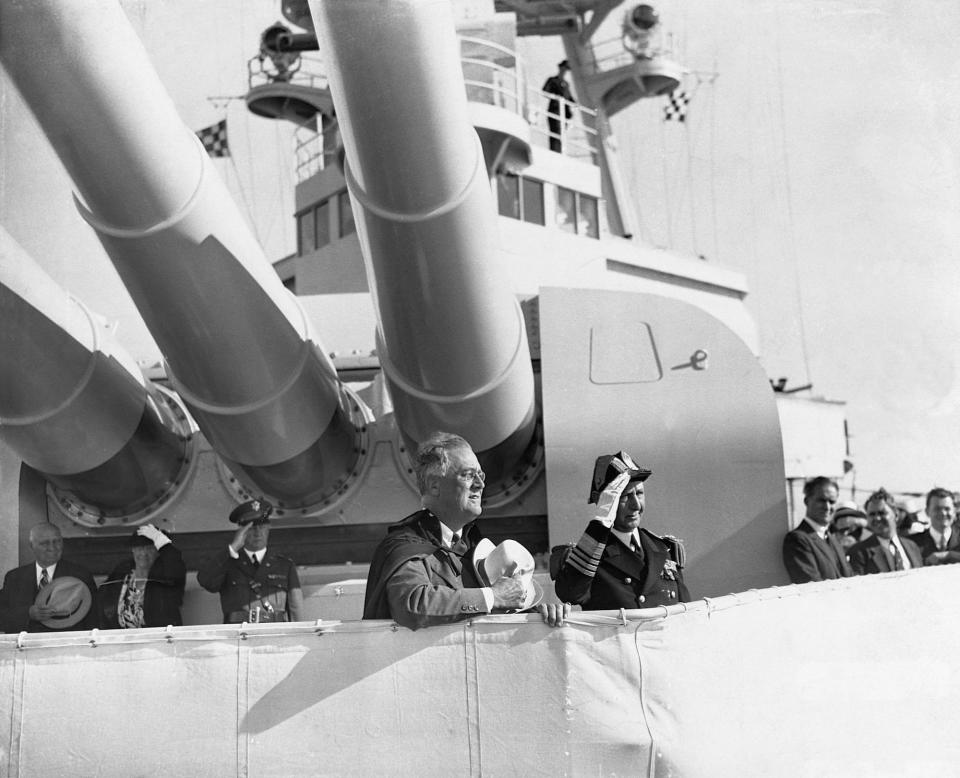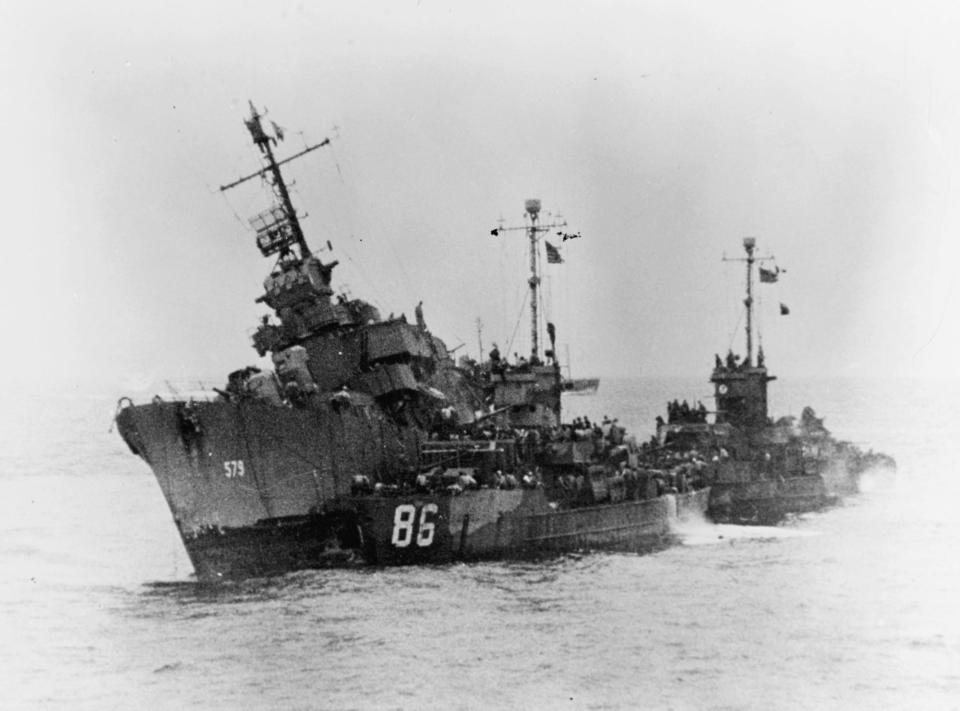The US Navy's unluckiest ship almost killed a president, and things only got worse from there
- Oops!Something went wrong.Please try again later.
USS William D. Porter had all the makings of another proud US Navy ship when it arrived during World War II.
But the Fletcher-class destroyer's service life was marred by a serious of mistakes and errors.
The US Navy has a long list of famous fighting ships known for heroic feats and proud service.
But the Navy also has its fair share of unfortunate vessels - chief among them the USS William D. Porter, a Fletcher-class destroyer built during World War II.
Known to its crew as "Willie Dee," the destroyer was, with little doubt, the unluckiest ship in US Navy history.
Accident-prone
Willie Dee had the makings of another US ship with a proud history. It was named after Commodore William D. Porter, a Civil War hero who was so committed to the Navy that he stowed away on a warship at the age of 12 and enlisted at 15.
Porter was launched on September 27, 1942, and commissioned in July 1943. After a shakedown and training period, it was ordered to leave Norfolk and join the battleship USS Iowa for escort duty in November 1943.
Porter left port for its first real mission on November 12. While it was pulling out of line, its anchor got caught on a neighboring destroyer and ripped out some of the other ship's railings, a life boat, and other pieces of the ship.
Undamaged itself, Porter rendezvoused with the Iowa and other destroyers for an important mission: escorting President Franklin Roosevelt to Tehran for meetings with the Allied leaders.
To maximize security, the ships were to maintain radio silence until they reached their destination, communicating only through signal lights.
A day into the journey, a sudden underwater explosion caused the entire formation to take evasive action, believing that they were being attacked by a submarine.
But it turned out that the explosion was actually caused by one of Porter's depth charges, which had been armed and then accidentally rolled off the ship.
Shortly after the depth charge mishap, Porter was hit by a freak wave without warning. One sailor was lost, a boiler room was flooded, and the captain had to break radio silence to tell Iowa why the destroyer was lagging behind.
A mistaken torpedo launch

On November 14, Roosevelt, a naval enthusiast who had served as assistant secretary of the Navy, asked for a demonstration of Iowa's anti-aircraft capabilities.
The battleship sent up multiple target balloons, and gunners on its deck set about shooting them down. A few of the balloons drifted toward Porter, whose crew also shot them down.
The accompanying destroyers then demonstrated mock torpedo attack runs. The torpedoes' primers were supposed to be removed to ensure they wouldn't exit the tubes when fired.
Porter got into position about 6,000 yards from Iowa and commenced its mock attack. As planned, the first two torpedoes did not leave their tubes when fired, but the third torpedo's primer was in place, and it shot out of its tube, heading for Iowa.
Pandemonium erupted on Porter. After being admonished for breaking radio silence earlier, Porter's captain was reluctant to warn Iowa by radio and ordered a warning be sent by signal light.
But in the haste and confusion, Porter sent the wrong message, instead signaling Iowa that the destroyer was reversing at full speed. Realizing the mistake, Porter broke radio silence and warned Iowa of the threat.
Iowa turned to avoid the torpedo, which exploded about 3,000 yards to the rear of the battleship in its wake. All of Iowa's guns were then immediately trained on Porter, as there was fear of an assassination plot.
Porter was ordered to sail to Bermuda, where its crew was arrested. Chief Torpedoman Lawton Dawson admitted to failing to remove the primer and was sentenced to 14 years of hard labor. But Roosevelt personally intervened, requesting that Dawson's sentence and any others given out for the incident be rescinded.
Roosevelt himself had asked his Secret Service detachment to move his wheelchair to the railing of Iowa so he could see the torpedo when he heard of its firing.
An unlucky end

Porter was transferred to the Pacific after the incident with Iowa. For a while, its life was relatively normal. Operating out of Alaska, it conducted anti-submarine patrols near the Aleutian Islands and even raided the Japanese-controlled Kuril Islands in June 1944.
In late September, Porter was ordered to the western Pacific, where it escorted ships and provided shore bombardment for American troops during the liberation of Luzon in the Philippines. The destroyer even managed to shoot down four Japanese aircraft and sink a few Japanese barges.
On March 24, 1945, Porter joined the naval force for the Battle of Okinawa, where it conducted shore bombardment, anti-submarine patrols, escorted minesweepers, and provided anti-aircraft support for the task force. It also downed another five enemy planes.
But Porter's bad luck returned; first when it accidentally raked the destroyer USS Luce with gunfire during an air attack early in the battle, and then on June 10, when a Japanese Aichi D3A "Val" dive bomber attempted a kamikaze attack on Porter as it operated off of Okinawa.
Porter managed to dodge the Val, which crashed into the water, but the aircraft's momentum and the ocean's current pushed the plane directly under Porter's hull, where it exploded, momentarily lifting Porter out of the water.
For three hours, the crew fought fires and desperately tried to repair the ship. But the damage was too great, and Porter was abandoned.
In its final moments, Porter appeared to have some luck, as not a single crew member was killed or seriously injured in the attack. All crewmen managed to evacuate before the destroyer slipped beneath the waves, ending the career of the unluckiest ship in US Navy history.
Read the original article on Business Insider

